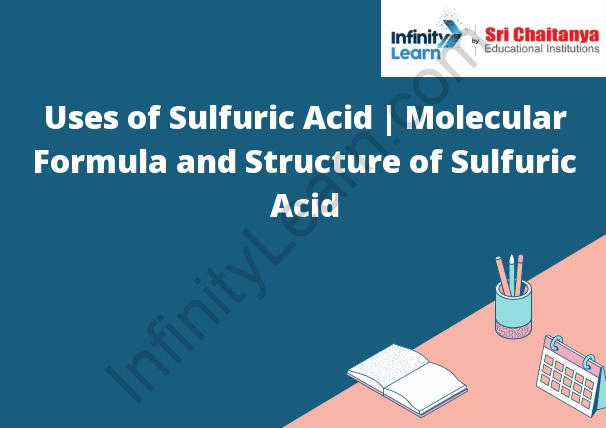Uses, Molecular Formula and Structure of Sulfuric Acid
Sulfuric acid is a strong mineral acid with the molecular formula H2SO4. It is a colorless, odorless, and syrupy liquid that is soluble in water. Sulfuric acid is produced in the chemical industry by the oxidation of sulfur dioxide. It is used in the production of fertilizers, detergents, and other chemicals. Sulfuric acid is also used in the refining of petroleum and in the production of metals. Uses of Sulfuric Acid | Molecular Formula and Structure of Sulfuric Acid.
The structure of sulfuric acid consists of a central sulfur atom bonded to two oxygen atoms. The sulfur atom is surrounded by a hexagonal ring of oxygen atoms. The oxygen atoms are bonded to each other by covalent bonds. The sulfuric acid molecule is polar, with the sulfur atom being negatively charged and the oxygen atoms being positively charged.

Sulfuric acid (American spelling and the preferred IUPAC name) or sulphuric acid (Commonwealth spelling), known in antiquity as oil of vitriol, is a mineral acid composed of the elements sulfur, oxygen and hydrogen, with the molecular formula H2SO4. It is a colorless, odorless and viscous liquid that is miscible with water.[6]
Pure sulfuric acid does not exist naturally on Earth due to its strong affinity to water vapor; for this reason, it is hygroscopic and readily absorbs water vapor from the air.[6] Concentrated sulfuric acid is highly corrosive towards other materials, from rocks to metals, since it is an oxidant with powerful dehydrating properties. Phosphorus pentoxide is a notable exception in that it is not dehydrated by sulfuric acid, but to the contrary dehydrates sulfuric acid to sulfur trioxide. Upon addition of sulfuric acid to water, a considerable amount of heat is released; thus the reverse procedure of adding water to the acid should not be performed since the heat released may boil the solution, spraying droplets of hot acid during the process. Upon contact with body tissue, sulfuric acid can cause severe acidic chemical burns and even secondary thermal burns due to dehydration.[7][8] Dilute sulfuric acid is substantially less hazardous without the oxidative and dehydrating properties; however, it should still be handled with care for its acidity.
Sulfuric acid is a very important commodity chemical, and a nation’s sulfuric acid production is a good indicator of its industrial strength.[9] It is widely produced with different methods, such as contact process, wet sulfuric acid process, lead chamber process and some other methods.[10] Sulfuric acid is also a key substance in the chemical industry. It is most commonly used in fertilizer manufacture,[11] but is also important in mineral processing, oil refining, wastewater processing, and chemical synthesis. It has a wide range of end applications including in domestic acidic drain cleaners,[12] as an electrolyte in lead-acid batteries, in dehydrating a compound, and in various cleaning agents. Sulfuric acid can be obtained by dissolving sulfur trioxide in water.
Sulfuric acid is a strong mineral acid that is made up of sulfur, oxygen, and hydrogen. It is a colorless, odorless, and syrupy liquid that is highly corrosive. Sulfuric acid has a whole host of commercial and industrial applications. Here are just a few:
1. It is used in the manufacture of fertilizers.
2. It is used in the manufacture of detergents.
3. It is used in the manufacture of explosives.
4. It is used in the refining of petroleum.
5. It is used in the manufacture of pharmaceuticals.
6. It is used in the manufacture of textiles.
7. It is used in the production of aluminum.
8. It is used in the production of steel.
9. It is used in the production of plastics.
10. It is used in the production of many other chemicals.
Uses of Sulfuric Acid | Molecular Formula and Structure of Sulfuric Acid





